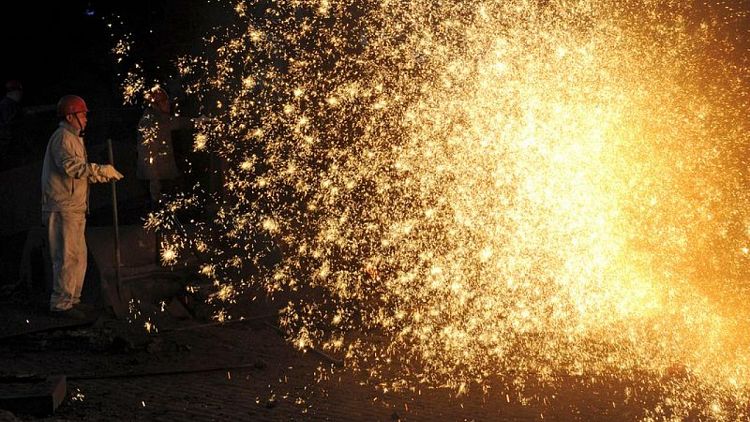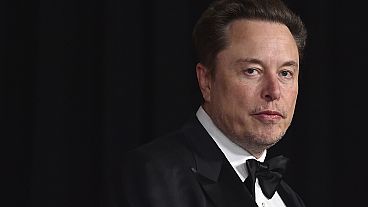By Kevin Yao and Gabriel Crossley
BEIJING (Reuters) -China's factories slowed their output growth in April and retail sales significantly missed expectations as officials warned of new problems affecting the recovery in the world's second-largest economy.
While China's exporters are enjoying strong demand, global supply chain bottlenecks and rising raw materials costs have weighed on production, cooling the blistering economic recovery from last year's COVID-19 slump.
Factory output grew 9.8% in April from a year ago, in line with forecasts but slower than the 14.1% surge in March, National Bureau of Statistics data showed on Monday. Retail sales, meanwhile, rose 17.7%, much weaker than a forecast 24.9% uptick and the 34.2% surge in March.
NBS spokesman Fu Linghui said while China's economy showed a steady improvement in April, new problems are also emerging, notably the rise in international commodity prices.
"The foundations for the domestic economic recovery are not yet secure," Fu told a news briefing in Beijing on Monday.
"For companies as a whole, price increases are conducive to the improvement of corporate efficiency, but the pressure on downstream industries needs to be paid attention to," he added.
China's factory price inflation hit its highest pace since October 2017 in April. That could rise further in the second and third quarters, according to a report from the central bank last week.
The slower growth rates in the April activity indicators were also due in part due to the fading base effects as year-on-year comparisons rolled away from very sharp declines seen when the coronavirus shut down much of the country in early 2020.
In the factory sector, motor vehicle production growth fell sharply to 6.8% from 69.8%, due in part to the base effect as well as critical shortages of semiconductors used in car systems.
Growth in the production of cement slowed in April, and coal production fell on year, although aluminium and crude steel output hit record highs, helped by firm demand.
"China's economy shows signs of unbalanced recovery: strong exports and domestic investment on one hand, but weak consumption on the other," said Zhiwei Zhang, chief economist at Pinpoint Asset Management, in a note.
Sectors related to travel, leisure and entertainment are large employers and still held back by COVID-19 uncertainty, he said.
Home appliances sales growth dropped particularly sharply in April from the month before, falling from 38.9% growth on year in March to 6.1%, NBS data showed.
Julian Evans-Pritchard, senior China economist at Capital Economics, in a note said month-on-month retail sales growth fell well below its pre-pandemic pace.
"Looking ahead, we think the rebound in consumption should gather pace again in the coming months as the labour market continues to tighten," he said.
TIME TO REASSESS?
China's economy expanded by a record 18.3% in the first quarter and many economists expect growth will exceed 8% this year.
Exports accelerated in April, thanks to strong demand for Chinese goods amid a brisk U.S. economic recovery and stalled factory production in other countries.
However, April also saw factory activity slow amid supply bottlenecks and rising costs and policymakers have acknowledged some of the recent weaknesses seen in the economic recovery.
A top decision-making body of the ruling Communist Party said last month the country will encourage manufacturing and private investment to recover as quickly as possible.
The Politburo meeting chaired by President Xi Jinping also warned China's economic recovery remained uneven and that its foundation was not yet solid.
The activity indicators on Monday also showed fixed asset investment increased 19.9% in the first four months from the same period a year earlier, slowing from January-March's 25.6% increase.
Private-sector fixed-asset investment, which makes up around 60% of total investment, rose 21.0% in January-April, compared with a 26.0% jump for the first three months.
"The government may put the monetary policy tightening on hold for now and observe the pace of recovery," Zhang from Pinpoint Asset Management said.
(Reporting by Kevin Yao and Gabriel Crossley; Additional writing by Roxanne Liu; Editing by Sam Holmes)



